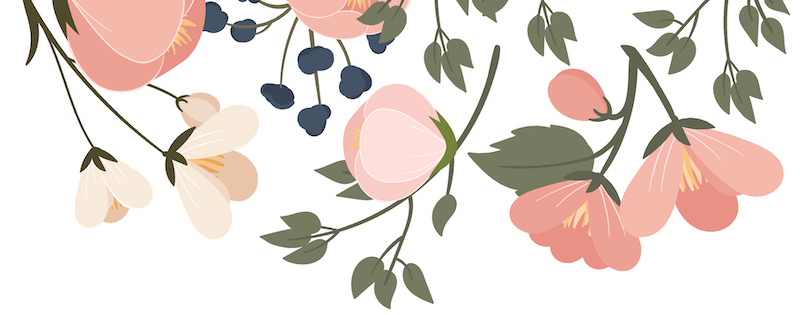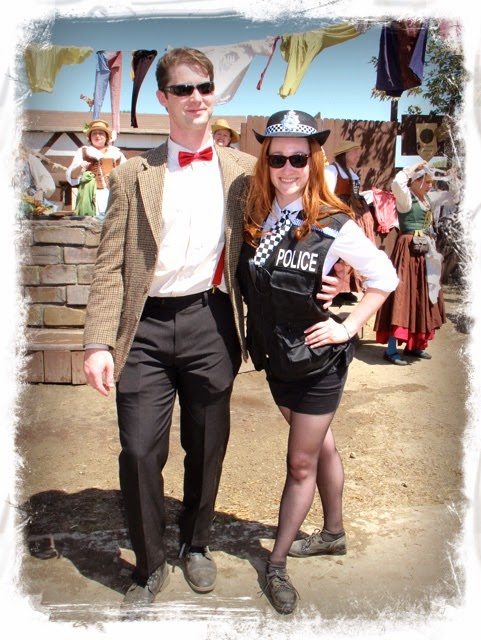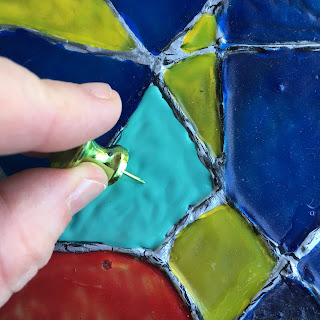I love using Plaid's Gallery Glass window paint colors and liquid leading. If you don't like using the liquid leading, Plaid also has a Gallery Glass instant lead lines product that is just peel and stick. If you are trying to figure out which faux stained glass products is easy to use and works best for larger project, then this review may help you. The Gallery Glass window paint colors and liquid leading come in squeeze bottles which are sold in different sizes. I have been using Plaid's Gallery Glass products to repair the faux stained glass windows for my local Renaissance Fair. During the renaissance show season, the faux stained glass windows are exposed to extreme weather conditions for about 2 1/2 months. The faux stained glass window are made of plexiglass and are usually displayed in straight sunlight (they will be mostly in the shade for the 2022 season). I have used other products that are similar to Plaid's Gallery Glass but they have not held up to the elements as well as this product does.
Before I go any further, I have to make the following notation: “As an Amazon Associate I earn from qualifying purchases” from links listed in this blog post. If you do not want to use my links, just do a search using your favorite search engine.
Since I have received a lot of emails asking me how the faux stained glass windows were holding up, I figured I would do a Gallery Glass product review update and share with you how I use the Plaid Gallery Glass to maintain these windows. I chose to use Gallery Glass because the windows that have the Gallery Glass product have held up really well over the years, despite the heat, sand, wind, sun and other elements they have been exposed to. The some of the other products I have tried over the years have led to disappointment.
At the current Renaissance Faire site, we have had days that vary from 60 degree to 101 degrees. The area also has days with varied humidity levels. The faux glass windows are also exposed to sand storms and high winds which can scratch the surface of the windows. This has an impact on the materials which I have used to restore the faux stained glass windows. It also affects how I process the windows once the faire season ends. Firstly, I wash each window. Then I oil the wood before I store it for the winter. This helps protect the wood during the cold months of being in storage and improves the texture of the wood. Since the windows are painted, I have to sand them slightly with sanding blocks (course to fine depending the portion of wood) to get the oil to penetrate. I do not repaint them until a few months before the new faire season so that they will look fresh (I usually have to sand them again so that the paint will go on smoother anyway).If a faux stained glass window design is badly damaged, I will try to remove the damaged bits. However, if there is no large damaged areas then I usually wait until the beginning of the next season to repair any of the window design damage so that they will look fresh for the new season.
Below is a picture of how one of the faux stained glass windows looked before I began to restore them. The colors were all faded out and the wood was in really bad shape. You can see to how there is a curve to the top of the window. They did not look good. There are a lot of cracks in the plexi glass but since these were created by individuals who were a major part of the faire (and have since past away), I did not want to replace the plexi glass. Instead I merely restore the pieces and keep them as close to the original work as possible (if you look closely you will see the initials of the folks who created these).

Each year I start the process of preparing the Faux Stained Glass Windows by using a paintable wood filler to repair any new cracks in the wood frames. Once the filler has dried, I then sand the wood parts of the window frame. Then I paint them with one to two coats of paint (if needed) and use a uv finish to protect the paint for the new season. Once that is done, I can focus on the faux stained glass. I look at each piece and check for fading, cracks (in the acrylic) and other signs of wear.  |
Cracked Plexi Glass
|
Note: you really need to remove the old material before adding new material. Below is an example of what happened when my daughter tried to just paint over a lighter color with a darker color (without cleaning the surface). It bubbled and looked really bad. I think she finally understands why taking a short cut is not always the best way to do this.
Anyway, I remove any of the old product (it is not Gallery Glass but one of their competitors who did not survive the season well) that is faded or discolored. Once the old product is removed, I prep the surface. I clean really well and make sure there is no dust or oil on the plexiglass. Then I began the slow process of repainting each area with the Plaid Gallery Glass colors and liquid leading.
Products used:
- Gallery Glass Liquid Leading
- Gallery Glass Instant Lead Lines
- Gallery Glass Window Colors in various colors
- Wood Filler
- Sanding Blocks (coarse to fine)
- UV Coating for Wood
- UV Coating for the Plexiglass
- metal charm
- Micro towel
- Soft paint brush and rollers
- Thumb tack
- Clay smoothing tools
- Soap
- Water
- Craft knife
I used both the Gallery Glass Liquid Leading and Instant Lead Lines on the plexiglass. I prefer using the liquid leading because it is more precise. However the instant lead is easy to use. Then I started filling in the colors with the Gallery Glass window colors. I did this one color at a time, and allowed time for each area to dry. I found that by lining the windows up in a row I can do this more effectively. I work with one color at a time on one window at a time, and then move onto the next window while it is drying. I keep the Gallery Glass bottles upside down in a cup, and that keeps bubbles from forming inside the applicator bottle. It also helps me to avoid the problem of accidental color smearing when the bottle accidentally rolls down in the wind (we have learned a lot of lessons over the years). My daughter helps me repair and paint the windows so the process can be done in a shorter time frame. This is picture of the windows lined up in my patio as we are working on them. For those who asked...I remove the faux stained glass colors with a tooth pick, plastic knitting needle, awl, and/or a craft knife. It really depends on the area and product, as to which tool I use. I can say from experience that the Gallery Glass paint colors are easier to remove than the competitor. However, you should know that I have found Gallery Glass adheres really well to plexiglass and is a bit harder to remove than it would be on regular smooth glass. I think that because the plexiglass is scratched it allows the product to adhere better. As for the removal process, since the Gallery Glass window color tends to cover up scratches, I am not worried over any fine scratches that may result from removal. Now I have used a competitor glass paint on some of the windows and that material is a lot harder to remove than the Gallery Glass product. I use tend to use a craft knife or awl to remove the competitor product.
The awl did some damage to my fingers and I quickly realized that my daughter and I had to be very careful that we did not injure ourselves in the process. Personally, I find that the Plaid Gallery Glass is so much easier to remove and will stick to using that product in the future. Once I removed the old dried out color, I used a buffer to smooth out the surface of the plexi glass to prepare it for the Plaid Gallery Glass. I have used plexi glass cleaner to clean them in the past, but that can get expensive. So I found that water and a micro fiber cloth work just as well and it is more cost effective. Once I have finished cleaning the plexiglass surface, I allow it to dry.
Another important tip that I have found, doing this over time, is that you really need to allow the gallery glass product to set horizontally for 24 hours or more. This allows the product to dry naturally and set well. Below is a picture of what can happen if you have a heavy hand (which I do) and put too much product on the window while it is vertical. As you can see it did not set well. I should have used less product and allowed it to dry horizontally for the full 24 hours. You can see here in this close up where I did not remove the old product and just applied the gallery glass. If you look closely you can also see where the gallery glass dripped because I did not allow enough time for it to try properly. It looks terrible.
Since this is obviously not the look I was hoping to get, I removed it and started all over again. This time I allowed it to set for 24 hours vertically. The result was much better.
Because I used so much product on the windows, I had to use a thumb tack to remove air bubbles. If you look at the orange colored area in the photo above, you will how bad the product looks if you do not remove any air bubbles before it dries. So, I had to remove that one and start over. To remove the air bubbles, some people use a lighter that they quickly move over the product. However, I did not feel comfortable using that method in front of my daughter so we utilized the time consuming tack method. It worked well enough for me and was a safer alternative.
You can create various effects with the Gallery Glass paints by using different tools during application. I used a double ended ball tool that came with one of my clay kits to move the product around and give it more of a ripple effect. The photo above shows the ridges in the yellow paint (which is not completely dry yet). I wanted to give the plexiglass windows more of a texture which reflects light better and happily covers some of the application flaws. If you use less product and do not swirl it with a tool, you can get a smoother finish. However, I really like the look of texture in a window.
I also wanted to make a couple of the elements in the design pop a little more in the sunlight. So I used the Gallery Glass liquid lead to outline the design. I let it dry for 24 hours. Then I used silver paint and a very think paint brush to paint over it and give it a more metallic looking finish. I know Plaid makes various colored liquid leads for their Gallery Glass line but I have ten bottles of black liquid lead and want to use them up.
I used a very metallic silver color paint and I really like how it came out. It looks even better when hung in the sunlight. I also decided to see if the Gallery Glass worked with glitter. I figured that since the product is fairly translucent, that it might work.
So I mixed the glitter with the color but that did not work very well. So removed it from the window. Then I decided to try laying the glitter on top of the product (after it was applied).Because these windows hang in a park for several months, I had to use biodegradable glitter with a sealant. This is to keep the glitter from falling off and harming local wildlife (before you ask which brand, I have to state that it is better to buy the bio degradable glitter within your own state or country so the product meets your local government standards). It looks messy, but once the piece dried I removed the excess glitter with a micro towel. It looked pretty good. I still could not capture how well it glitters with my phone camera but it looks better than the photo.
Since the glitter idea worked, I decided to try adding a charm to the paint to see if it would hold. At my faire, we exchange charms or small gifts that can be attached to our costumes. So I really wanted to reflect that in the windows.
I added the metal charm to the window just after I put down the Gallery Glass and let it dry. It held onto the charm. However, I did not want the charm to fall off during the show and possibly be swallowed by local wildlife so I removed it and used a strong adhesive to make sure it was not going to move. The charm itself is cheap metal and very light weight. I had to seal the charm to protect it from rusting (it is very humid at the faire site).
Once I had finished the windows and allowed them to dry for a few days, I finished them by spraying them with Krylon's UV Resistant Acrylic Coating to provide a little more protection from the elements. It also helps keep any glitter I may have not picked up with the micro cloth from coming off the windows.
I am really happy with how they came out. I apologize in advance for the quality of the pictures below. I let my daughter use my camera and she put her finger on the lens and I did not catch the smudge before I left faire that day. But you get an idea of how they looked hanging up at faire.
Note: This post is not sponsored. I paid for all the Gallery Glass, Krylon and other products I used to repair these windows. Also I was not paid to fix the windows. I volunteered to repair them because they are a part of faire history. These have hung at some of the various faire locations throughout the years. I have been going to renaissance faire since I was twelve years old and these windows hold some fun memories for me.






















































